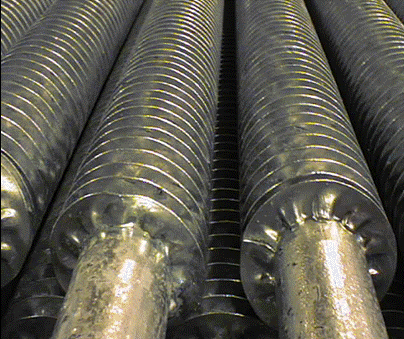Downstream Tube Cold Forming
The Main Purpose of cold working processes are to achieve closer wall thickness and diameter tolerances, an improved surface finish and specific mechanical properties in the tubing. These processes also serve to expand product mix toward lower ends of the OD and wall thickness scale.
Cold Drawing
Three Processes employed by Cold Drawing of Tubes:
Hollow Drawing, Stationary or floating plug drawing, and drawing over a mandrel (Drawing on the bar).
Because the lack of tools in hollow drawing, only the OD of the tube is reduced and the outer surface polished in the die, with the wall thickness undergoing no more negligible change in absolute terms of respects of its tolerance.
In Plug drawing, a plug is either fixed to a mandrel bar, or a floating plug which forms an annular gap with the block die through which the tubing is drawn. Reducing both the is inside and outside diameter, also the wall thickness as well as the smoothing and polish of the inside and outside surfacing. Generally, a fixed stationary plug is used to produce reductions in the area up to 45% per draw. Drawing over floating plugs are predominantly serviced for small diameter tubes, and or larger lengths, particularly if material is taken from coil and after drawing, and recoiled on capstan.
Where tubing is drawn over a mandrel, the tube is pulled through a die with the aid of an inserted mandrel bar, with the outside / inside diameters, and also the thickness of the wallers undergoing great reduction. Possible reductions in are per drae are higher than cases of plug drawing, but the length of the tube is limited by the length of the mandrels bar. However more, the tube has to be slightly expanded in a reeling mill following the drawing in order to enable the mandrel to be extracted from the steel tube. Drawing over a mandrel is typical used for standard sizes and so called preliminary draw, where the final dimensions are only produced in several sequential drawing operations with heat treatment. Prior to cold drawing, the steels anneal and surface treatment is removed and provided with a lubricant carrier.
Cold forming process causes the material to forego stress hardening i,e the yield strength and tensile strength values of the material are increased while its elongation and toughness value decreases. This can be desirable for many applications. However, the associated reduction in ductility, heat treatment has to be applied prior to any forming operation. Drawing over a mandrel, or a stationary plug as the internal tool requires machines that are configured for straightline/ finite motion.










